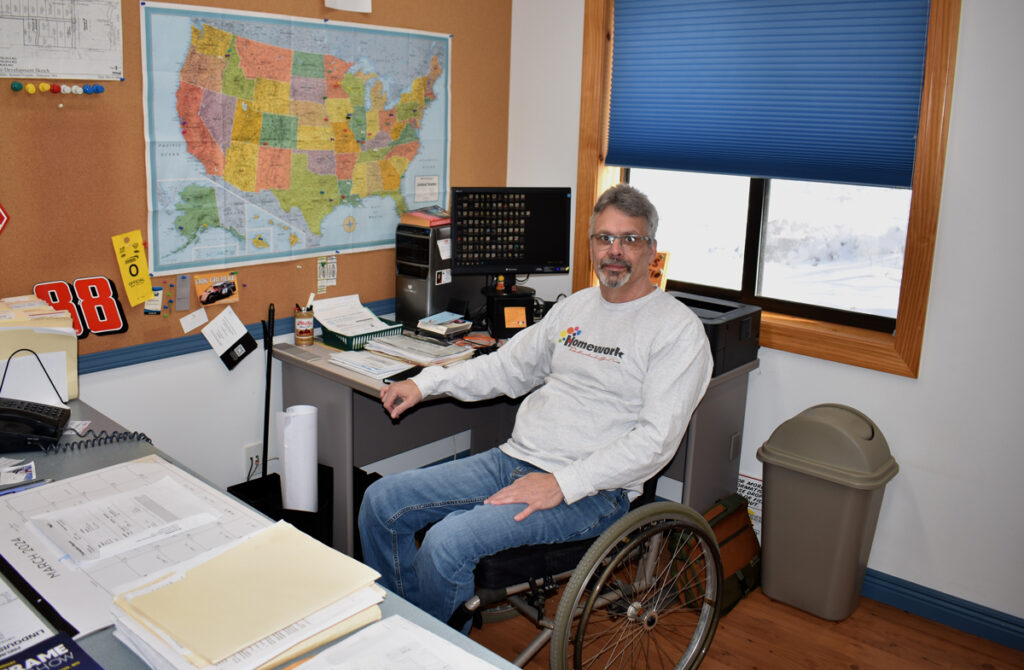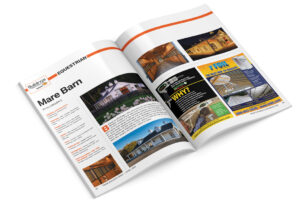When You See a Chance, Take It!
By Linda Schmid
Inspiration
The craftsmanship of one pole building inspired Dave Gruhlke. It was the late ’80s and he was in tune with building trends since his dad built a pole barn a few years before, and he thought that he would like one for his hobbies, working on cars and storing his snowmobiles. This garage was much more attractive than most, Dave thought, and then he had an idea: Why not build a home that incorporated living space and an oversized garage into one building making use of the simplicity and economic efficiencies of post-frame construction?
Gruhlke had never heard of anything similar, and when he spoke to the zoning people at the county, they said he couldn’t build such a thing, but they couldn’t come up with a reason why he couldn’t. There was no rule against it. So Gruhlke moved ahead with his plan and built a post-frame home with a large garage incorporated. Insurance was not an issue; he took it to his long-term provider. Financing is a different animal, but because he had relationships at his local bank, they worked it out for him.
A Post-Frame Home? Unheard Of!
Gruhlke liked his home, and others admired it. It was a natural progression to building post-frame homes and selling them to like-minded people. He started a company, Homework Design, in 1990. He sold some post-frame homes, some traditional pole barns, and some stick-built homes. Many people were wary of post-frame homes because they were so unconventional. Some cited concerns regarding wood poles and rot.
A Better Way To Do Post-Frame
Peoples’ concerns about wood in the ground provoked a question for Gruhlke: Why not develop a plastic cover for the wood that goes in the ground? (The wood was treated, but a plastic sleeve would further protect it for a long time.) The result was that in 1994 Gruhlke got a patent on Plasti-Sleeve, the original plastic sleeve protector for posts.

Dave putting in another day
at the office.

Establishing his new product in the industry entailed the same challenges as introducing post frame homes to people; it was new and unheard-of, and people were hesitant to move forward with a product that broke from the tried-and-true. He began, therefore, contacting post-frame building companies and providing them with free samples. Morton Buildings was his first break. They bought the first sleeves, and for a few years they had an exclusivity arrangement. The Plasti-Sleeve became a standard feature on Morton’s stub column for sliding doors, thereby proving its efficacy in protecting wood in the ground.
Once the exclusivity arrangement ended in 1998, Gruhlke began marketing to other companies, and exhibiting at Frame Building Expo, calling on the association’s member list, and advertising in Frame Building News.
Success
Since the beginning, the company has developed and launched other products including a more economical, shortened sleeve; a skirtboard cover, mold designs, and more.
As the original inventor and manufacturer of his products, Gruhlke feels blessed that he is able to innovate and prosper despite the challenges of being paralyzed from a snowmobile accident which foreshortened his career as a contractor.
Plasti-Sleeve is a family company out of Zimmerman, Minnesota, with just three employees including his daughter as office administrator and a shipping manager. They have independent sales reps selling their product. Gruhlke said they believe in the simple, heartfelt philosophy of treating others as you wish to be treated.
Keys to Business
Gruhlke strives to be out in front of things, developing what customers need before they know they need it. He stresses surrounding yourself with good people, employees, salespeople, manufacturers. These are the people who can help you make it happen, he said.
He adds that when you’ve got your product and service right, you should be aggressive in marketing it; it can help the company grow much more quickly.
“Whatever you endeavor, make sure quality is first and foremost, and don’t be afraid to look at new ideas,” Gruhlke said, “particularly about what goes in a building.”
Protecting Post-Frame in the Future
Gruhlke sees continued growth in the future, and hopefully some more Homework Design patented products; he is always working on something. He believes that many people are still building post-frame buildings with wood in the ground, particularly in the shed and agricultural building markets, and they could all use some extra protection. “There is plenty of room for growth for Plasti-Sleeve and other innovative companies like us,” Gruhlke said. FBN























